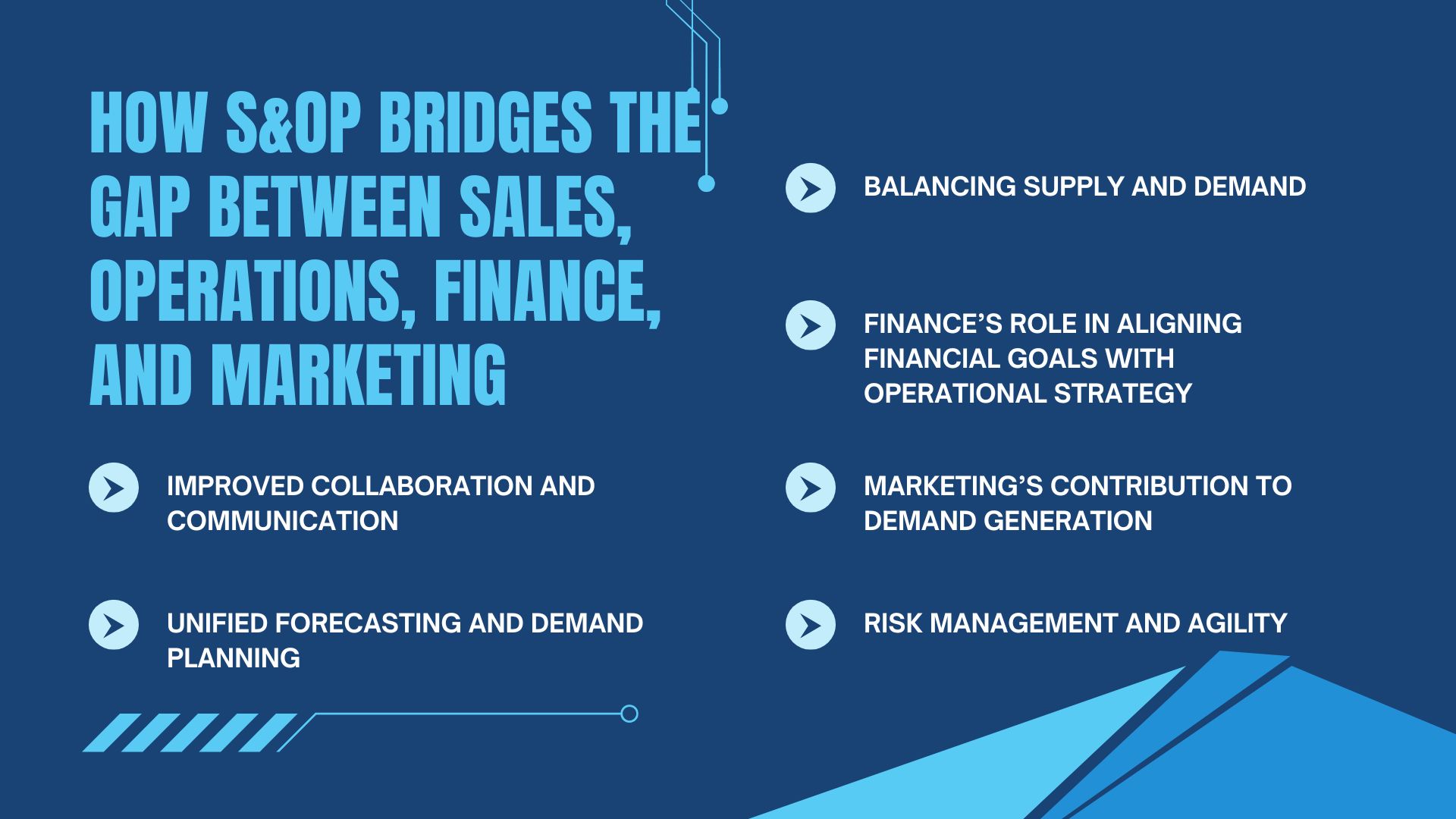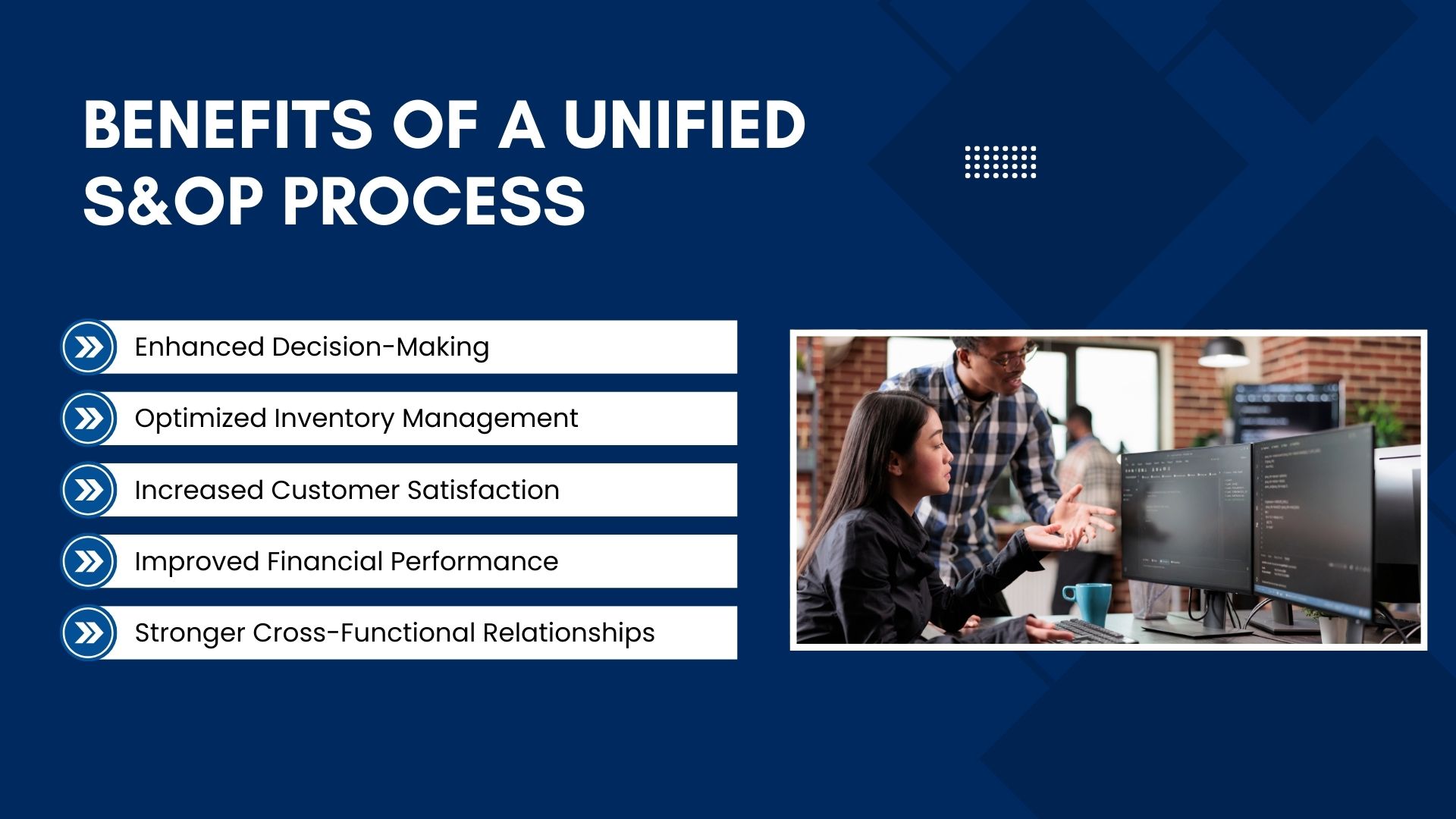Mastering S&OP: The Key to Aligning Sales and Operations Teams
In today’s competitive and dynamic business environment, companies must stay agile, responsive, and collaborative across departments to ensure efficiency, profitability, and customer satisfaction. Sales and Operations Planning (S&OP) plays a crucial role in achieving this alignment, ensuring that sales, marketing, finance, and operations teams work together in harmony to meet company goals.
In this article, we’ll explore how S&OP serves as the linchpin in aligning these critical functions and why mastering S&OP is vital for long-term success.
What is S&OP?
At its core, S&OP is a structured process that integrates the various functions within an organization—primarily sales, operations, finance, and marketing—to ensure a unified approach to forecasting, planning, and decision-making. It aims to balance supply and demand while aligning all functional areas to meet the company’s strategic objectives.
S&OP has evolved over the years from a simple supply chain management tool to a comprehensive business management process that requires close collaboration between departments. The goal is to create a single, cohesive plan that aligns resources, inventory, production, and financial planning with customer demand.
Why Sales and Operations Alignment Matters
Historically, sales and operations have often been siloed within organizations. Sales teams focus on driving revenue and meeting customer demand, while operations teams focus on supply chain efficiency, production, and cost management. However, when these two functions operate independently, discrepancies in forecasts, inventory levels, and production schedules can arise, leading to missed sales opportunities, stockouts, excess inventory, and poor customer satisfaction.
The traditional divide between sales and operations can also lead to conflicting priorities:
- Sales teams may push for faster delivery or higher product availability to meet customer demand, potentially straining operations with unrealistic requests.
- Operations teams may focus on optimizing production and inventory management based on internal constraints, sometimes disregarding actual customer needs.
This misalignment can create inefficiencies and friction, ultimately affecting the bottom line. This is where S&OP comes in.

How S&OP Bridges the Gap Between Sales, Operations, Finance, and Marketing
- Improved Collaboration and Communication
S&OP fosters open communication between all functional areas. Through regular meetings (often monthly), each department shares critical data, insights, and plans, ensuring everyone is on the same page. Sales can provide input on upcoming promotions, new product launches, and demand forecasts, while operations can give feedback on production capabilities and inventory availability. By addressing potential issues collaboratively, teams can prevent problems from escalating.
For example, if the sales team anticipates a spike in demand due to an upcoming promotional campaign, they can communicate this in advance, allowing operations to adjust production schedules and ensure adequate inventory levels. Marketing can also align their efforts with this information to better support demand generation.
- Unified Forecasting and Demand Planning
One of the most critical aspects of S&OP is the integration of sales forecasting and demand planning with operations. By using historical data, market trends, and input from sales, marketing, and finance, companies can create a more accurate forecast of future demand.
Sales teams play a vital role in providing market insights, customer expectations, and sales targets. Operations and finance departments contribute by evaluating production capabilities, raw material availability, and financial constraints. By integrating all perspectives, the company can create a more realistic demand forecast, reducing the risk of overproduction or stockouts.
- Balancing Supply and Demand
A major challenge for businesses is balancing supply with customer demand. Operations teams are responsible for ensuring products are available to meet demand, but they must also control costs and optimize production efficiency. On the other hand, sales teams must meet customer expectations, which may sometimes be influenced by external factors like seasonality or market fluctuations.
Through S&OP, the company can use scenario planning and simulations to explore different demand and supply scenarios, helping to identify potential gaps. For instance, if demand is expected to outpace production capacity, S&OP can help identify ways to increase capacity, such as outsourcing production or adjusting inventory levels.
- Finance’s Role in Aligning Financial Goals with Operational Strategy
Finance teams often have the responsibility of maintaining profitability and cash flow. S&OP ensures that financial constraints, such as cost limits, pricing strategies, and margin targets, are factored into the planning process. By integrating finance into the S&OP process, companies can align operational plans with financial goals, such as achieving specific revenue targets or maintaining a healthy working capital position.
For example, the finance team might point out that the company’s financial health would benefit from reducing excess inventory. This insight can prompt the sales and operations teams to adjust production and distribution strategies, ensuring that the company meets its financial objectives without sacrificing customer satisfaction.
- Marketing’s Contribution to Demand Generation
Marketing teams play a critical role in demand generation through advertising, promotions, and product launches. S&OP ensures that marketing initiatives align with the company’s operational capabilities. When marketing campaigns are planned, the sales and operations teams must work together to ensure that adequate inventory and production capacity are in place to support them.
Moreover, by providing insights into customer behavior, market trends, and brand positioning, marketing can help sales teams make better decisions about which products to prioritize, when to launch promotions, and how to tailor sales strategies to meet market demand.
- Risk Management and Agility
In an increasingly unpredictable business environment, companies must be agile in responding to changes in demand, supply chain disruptions, or unforeseen events. S&OP processes allow organizations to build resilience by identifying potential risks and developing contingency plans.
For instance, if a sudden shift in customer preferences or a supply chain disruption threatens to impact product availability, S&OP enables the sales, operations, and finance teams to quickly collaborate on solutions—whether it’s reallocating inventory, adjusting production plans, or changing pricing strategies.
Benefits of a Unified S&OP Process
By mastering S&OP, companies can realize several benefits:
- Enhanced Decision-Making: Data-driven insights and cross-functional collaboration improve decision-making across departments.
- Optimized Inventory Management: Balancing supply with demand helps reduce excess inventory and stockouts.
- Increased Customer Satisfaction: By ensuring that the right products are available at the right time, customer satisfaction improves.
- Improved Financial Performance: Aligning sales, operations, and finance with company goals improves profitability and cash flow.
Stronger Cross-Functional Relationships: S&OP creates an environment of trust and cooperation between departments, fostering a culture of teamwork

Conclusion: The Path to Mastery
Mastering S&OP is not a one-time event but an ongoing process of continuous improvement. It requires commitment from all departments, clear communication, and a shared understanding of business goals. When done right, S&OP creates a synchronized, agile organization where sales, marketing, finance, and operations teams work together as a cohesive unit to achieve greater efficiency, responsiveness, and profitability.
If your organization hasn’t fully embraced S&OP or is struggling with alignment, now is the time to take action. By fostering collaboration between departments, improving forecasting accuracy, and aligning operational and financial strategies, you can transform your S&OP process into a competitive advantage.
Through disciplined S&OP, your teams can move beyond silos, driving improved performance, innovation, and long-term success.
